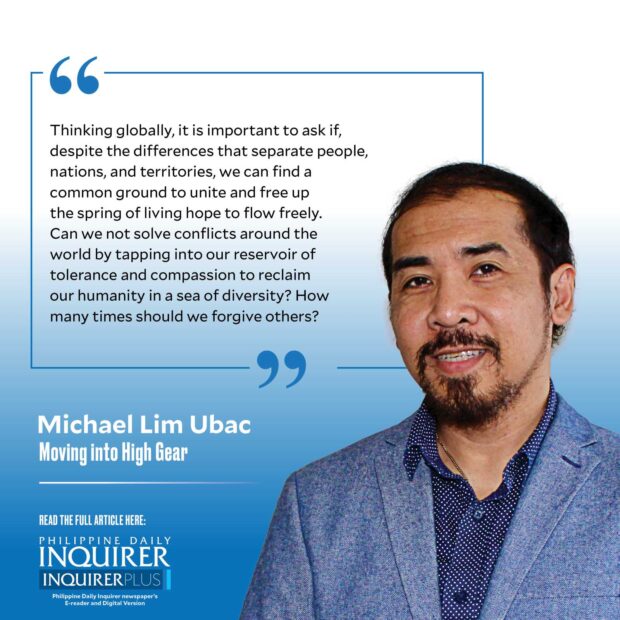Holy Land’s ladder and wall

Jerusalem is sometimes referred to as “the city of God” by Christians, while “Mount Zion,” which is mentioned 152 times in the Old Testament and seven times in the New Testament, is used as a title for Jerusalem.
Jerusalem has maintained the same character that it has been known for through the ages. For instance, the Old City continues to use its narrow cobblestone streets, which the Lord Jesus Christ used during his earthly ministry.
Bethlehem, Galilee, and Jerusalem are often viewed by Christians as the most sacred pilgrimage sites in Israel because of their connection to Jesus’ birth, life, and ministry. In between these pilgrimage sites are biblical places that still go by their ancient names: Bethel, Hebron, Jericho, Gaza, and Ashdod.
Status Quo. The fact that Christianity is not a monolithic faith is reflected in the affairs of the Church of the Holy Sepulchre, which was built by Constantine the Great in the 4th century.
The “immovable ladder,” a cedar wood ladder that has remained under the window of the church since the 18th century also attests to a peculiar arrangement that has been frozen in time due to Christian division. The ladder cannot be moved by one sect without sparking a conflict, and there are no Christian sects that control or own the whole church. Catholics and Orthodox Churches take turns holding Mass and prayers at the church, a daily ritual that becomes hurried and frantic during Lent. But is it possible to move the ladder to bridge the divide?
This religious status quo spills over into the church’s underground cavern, where Helena, Constantine’s mother, found a relic of the cross in 326 AD. Contrastingly, opposite the church’s southern courtyard lies the Ayyubid Mosque of Omar, with its minaret towering over the area.
Another uneasy arrangement governs the Western (Wailing) Wall, a holy place for Jews, and above it, the Temple Mount. The latter site is the holiest place for Jews and the third holiest place for Islam (al-Aqsa Mosque), following Mecca and Medina. Jews are allowed to pray before the western retaining (protective) wall of the Temple Mount, and thus consider it holy because of its connection to the Temple. Non-Jewish pilgrims and tourists, such as Filipinos, can go up to the Temple Mount, which provides a panoramic view of the Mount of Olives to the east.
Prospects for peace. Jerusalem still holds the key to the future of Israel, particularly its peaceful existence as a modern state, by championing a process that may not be purely political or military, but also cultural and religious.
While visiting this sacred but contested land twice, I had the opportunity to ponder these things. While I was there, Jews and Palestinian Arabs coexisted peacefully. Orthodox Jews graciously allowed me to pray before the Western Wall. Our tour guides and drivers were Muslims, but they were surprisingly familiar with the Bible. They used the Scripture to explain the significance of holy sites to a busload of Christian pilgrims and tourists. The Bible is indeed a historical book.
Thinking globally, it is important to ask if, despite the differences that separate people, nations, and territories, we can find a common ground to unite and free up the spring of living hope to flow freely. Can we not solve conflicts around the world by tapping into our reservoir of tolerance and compassion to reclaim our humanity in a sea of diversity? How many times should we forgive others?
In “No Little People, No Little Places,” Francis Schaeffer (1974) said: “Our attitude toward all men should be that of equality because we are common creatures. We are of one blood and kind. As I look across all the world, I must see every man as a fellow creature, and I must be careful to have a sense of our equality on the basis of this common status.”
Servanthood. Schaeffer asked Christians to emulate Christ. “Every Christian, without exception, is called into the place where Jesus stood. To the extent that we are called to leadership, we are called to ministry, even costly ministry. The greater the leadership, the greater is to be the ministry. The word minister is not a title of power but a designation of servanthood. There is to be no Christian guru,” Schaeffer said.
As we commemorate the crucifixion of Jesus Christ, which happened over 2,000 years ago in Roman-controlled Jerusalem, it may be wise to revisit Isaiah’s prophecy of our Messiah as a suffering Servant, to wit:
“Surely he took up our pain and bore our suffering, yet we considered him punished by God, stricken by him, and afflicted. But he was pierced for our transgressions, he was crushed for our iniquities; the punishment that brought us peace was on him, and by his wounds we are healed. We all, like sheep, have gone astray, each of us has turned to our own way; and the Lord has laid on him the iniquity of us all” (Isaiah 53:4-6).
——————–
For comments: [email protected]; @umichaell















